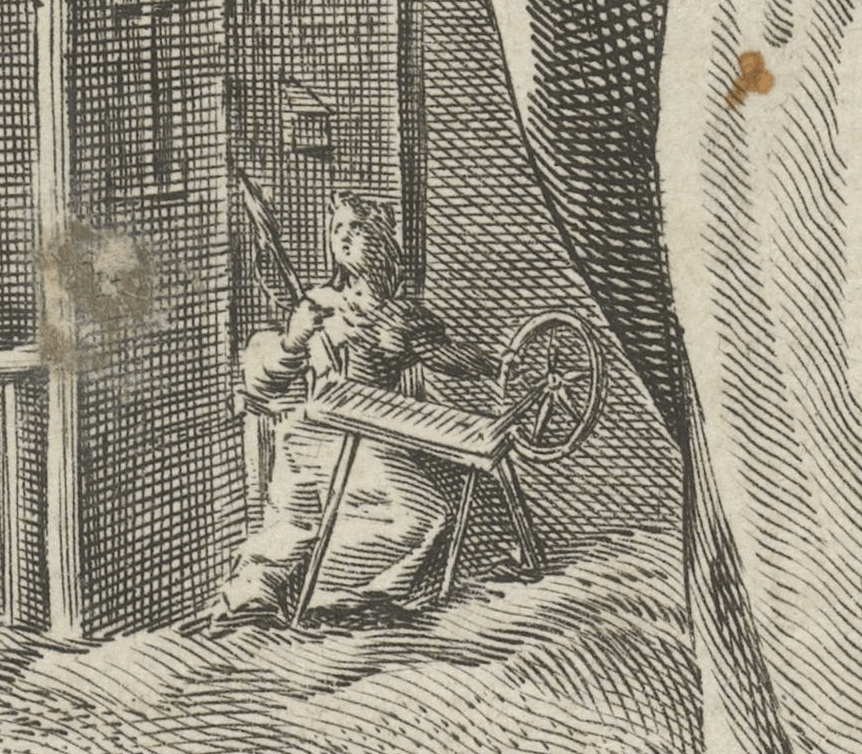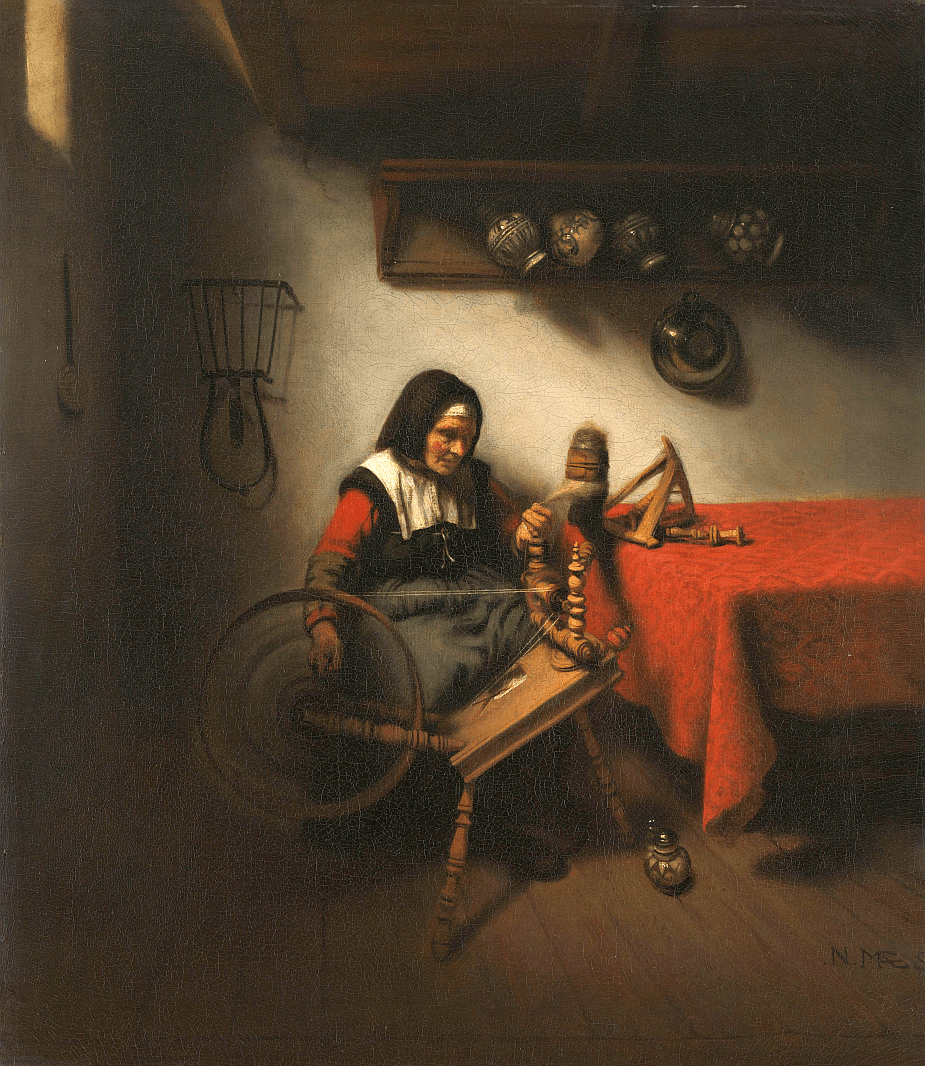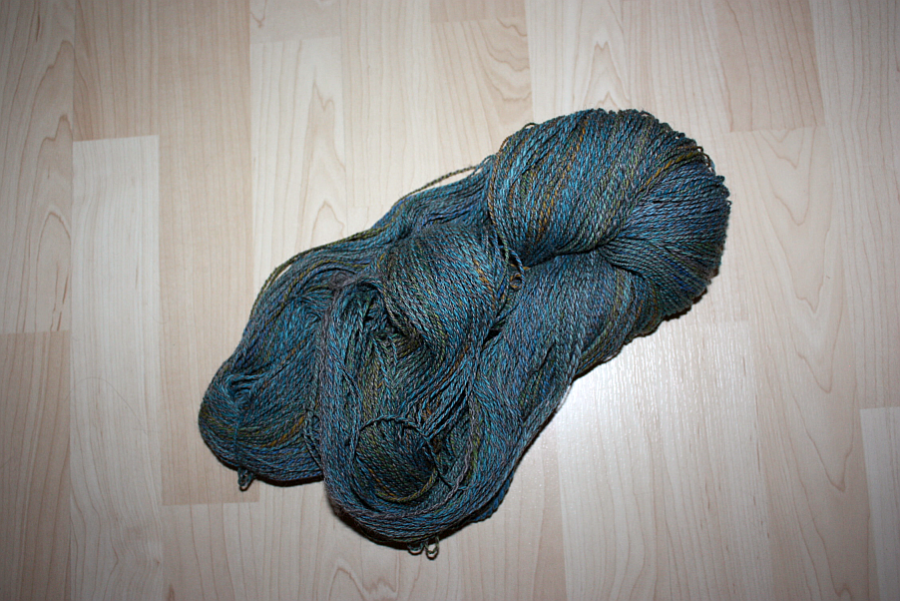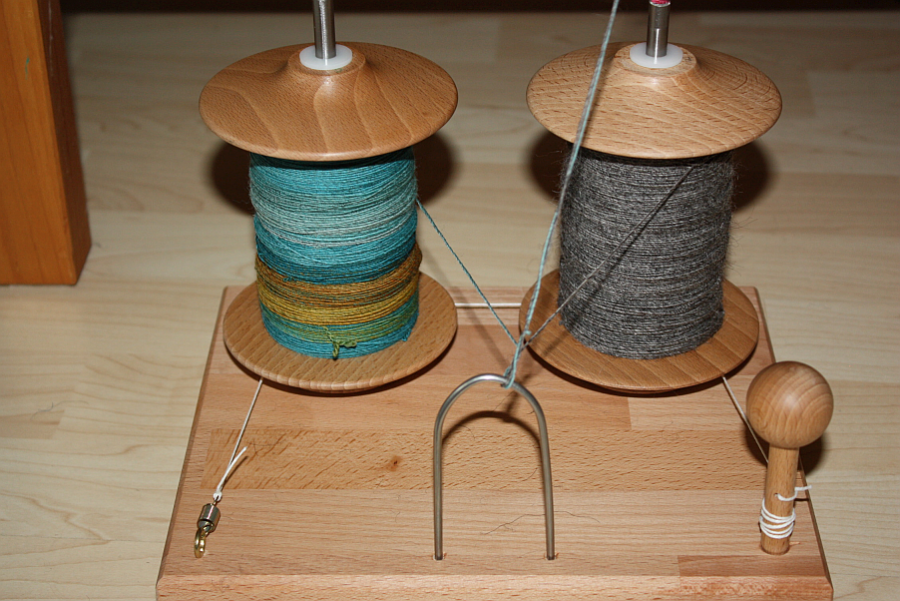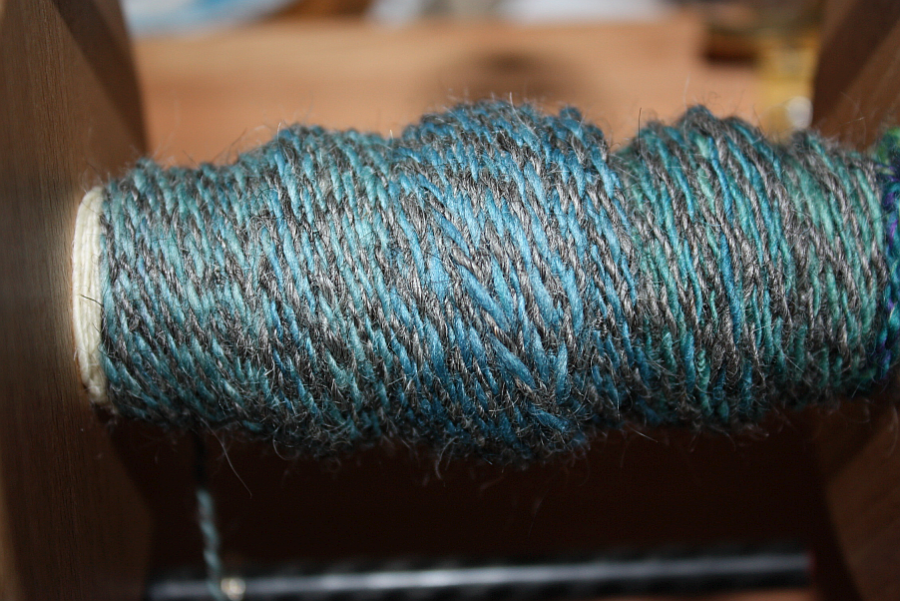Occasionally, I get questions about spindle wheels in my mail, usually from people on the hunt for one, and sometimes including the question about where mine is from. There's several possibilites to get one - ebay is certainly one, though you'll have to have it shipped, or find a way to get it transported to you, which might be difficult, as these wheels tend to be rather large. There's woodworkers who might be willing to make one, or you can go for it and make one yourself, like I did. There's one plan available on how to build a wheel, and I think I actually did buy that plan at one point, years and years ago, but never actually used it.
No matter which way you are going to go for, the most important thing, in my opinion, is that you know what to look at so you get an actual working, functioning tool. So what are the important bits of a Great Wheel, or Spindle Wheel?
Obviously, since it's called a Spindle Wheel, one of the important bits is... the spindle. The second important bit is the wheel itself. Let's start with the latter.
The wheel has to hold and take along the driveband which in turn moves the spindle itself, which is usually set into a bit of wood with one or several grooves to hold the driveband. In some cases, there's an additional ratio-changing construction between the main wheel and the spindle, called a Minor's Head or sometimes Miner's Head.
The important things here are: The wheel has to be aligned well enough with the spindle or minor's head to avoid sideways pull on the driveband; the spindle has to turn smoothly in its bearings (which can take any number of shapes), and tension of the drive band needs to be high enough to avoid (too much) slippage, but otherwise as low as possible (as usual on spinning wheels). The spindle should be straight and taper towards a point; that point does not need to be needle-sharp, but it should be pretty pointy, as when spinning, the thread glides over the spindle tip with each rotation. So if your spindle wobbles, and/or has a broad tip, this adds to the "yank" you will get when the yarn goes over the tip. Less yanking means you have a smoother spinning feeling, and I find it easier to do a good, even yarn with a smooth spinning feeling.
The second important bit, the wheel. Here's where it gets interesting.
Medieval Great Wheels are great because there is no Minor's Head, so you need to get all of your rotational speed needs satisfied by the ratio between wheel and spindle. For a rather high-twist yarn, which we will assume is the goal of the medieval spinner in most cases, this means you want a big ratio so you don't spend an eternity turning the wheel... and that means: small spindle pulley wheel diameter, large wheel. This is still the case with the later wheels, though you can get a higher ratio with a smaller main wheel when using a Minor's Head (which was
patented by Amos Minor or Miner - both variations of the name can be found - in 1810). The Knitting Geneaologist also has an
interesting article about the Great Wheel vs. the flyer wheel (inspired by someone else's blog post, but an interesting read even if you don't look at the inspiration).
Since you have to turn the wheel with one hand, there's two options... in theory. Option one is one-sided mounting of the wheel, which is what you typically see on the Great Wheels. Option two is mounting the wheel with an axle on both sides in two supports, and fixing a crank to the axle on one side so you can turn the wheel with the crank. This is sometimes seen on small wheels with a spindle, and quite common on early flyer wheels. It is not a true option for a Great Wheel, though - because of the spinning procedure.
When spinning on a Great Wheel, you have a non-continuous process, just like in spindle spinning. This means you turn the wheel and draft your fiber, then turn some more until you have sufficient twist in the yarn. During this process, the yarn glides over the top of the spindle tip, forming a spiral from the base of the spindle (where you store your finished yarn) to its tip. Once your length is spun, you have to stop the wheel, turn it backwards a little to un-wind the spiral back to the spindle base, and then start turning it again in spinning direction to first wind up the finished yarn, then spin the next length.
Privacy Policy Notification
This site attempts to embed videos from the YouTube web server. Please note that when loading YouTube videos, personal information may be transmitted to YouTube. Do you agree with the loading and playing of Youtube videos? You can find more information
HERE
This means you have to stop and speed up your wheel all the time while spinning, all with one hand. If you are doing this with a little crank in the middle of the wheel, it is much, much harder to do than when you can access the whole length of the wheel spoke - you can slide your hand towards the rim of the wheel for stopping and starting, getting a much better leverage and thus needing much less strength, and slide it towards the hub to maintain rotational speed with small, easy motions of your hand and arm.
The starting and stopping all the time also explains why the wheels on this spinning tool look so light and airy, and don't have the solid rims we know from pedal-driven flyer spinning wheels. From my own experience, I can tell you that each gram does count when you are spinning, and you want your wheel to be as light as possible. The wheel on my own construction weighs in at about 2.7 kg, and that is with a very wide rim (about 11 cm) and a diameter of 115 cm. When I start spinning, it seems all light and nice and fine, but after a while, you can really feel the arm muscles getting more and more tired - it definitely does need training, and building up some endurance in the arm.
So this is why you want a wheel that turns easily in its bearing (even though that can be as simple as a metal axle through a block of wood, like in my case) and does not weigh much - which is achieved by slender spokes and a rim that is not from solid pieces of wood, but from a steam-bent strip of wood. The smaller the distance between your spindle and your drive wheel, and the less inherently wobbly your construction, the narrower this rim can be. My wheel is designed to be taken apart and travel, which is not what the original wheels would have done, so I went for a really wide rim. This has proved to be a good idea - I've had the driveband wander off the drive wheel even with this large width when my things were not properly aligned, as they tend to do right after setting up.
So, to sum up - non-wobbly, straight, adequately pointy spindle, in good alignment with a light, large drive wheel that is mounted on one side only. These are the things that will make your Great Wheel a great tool.





